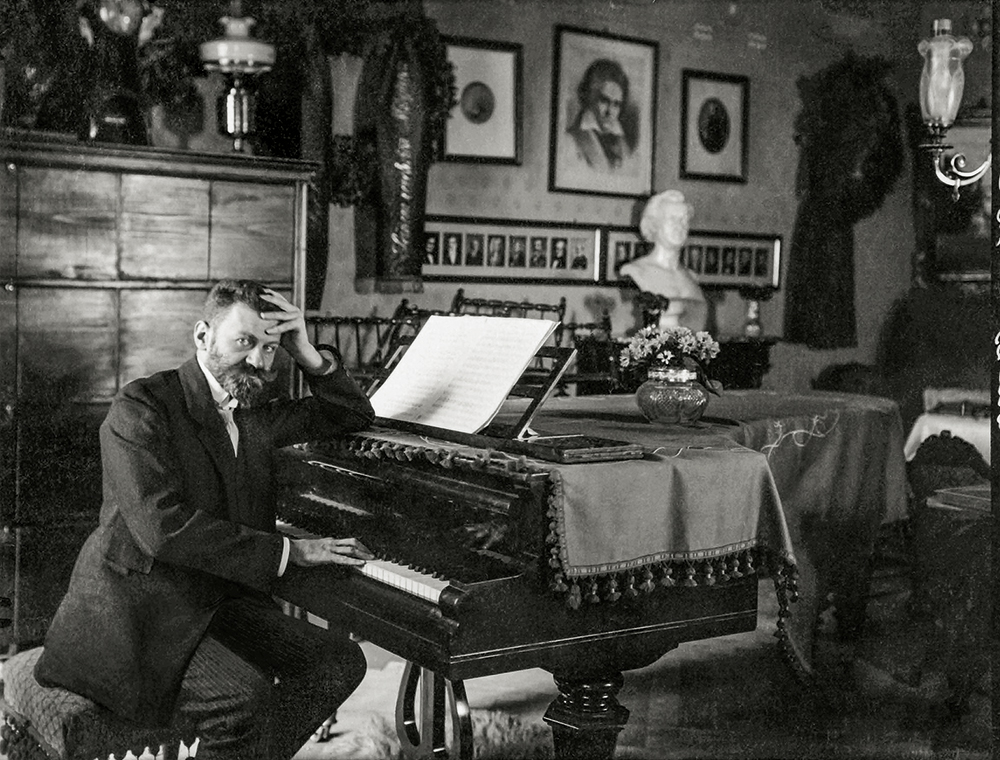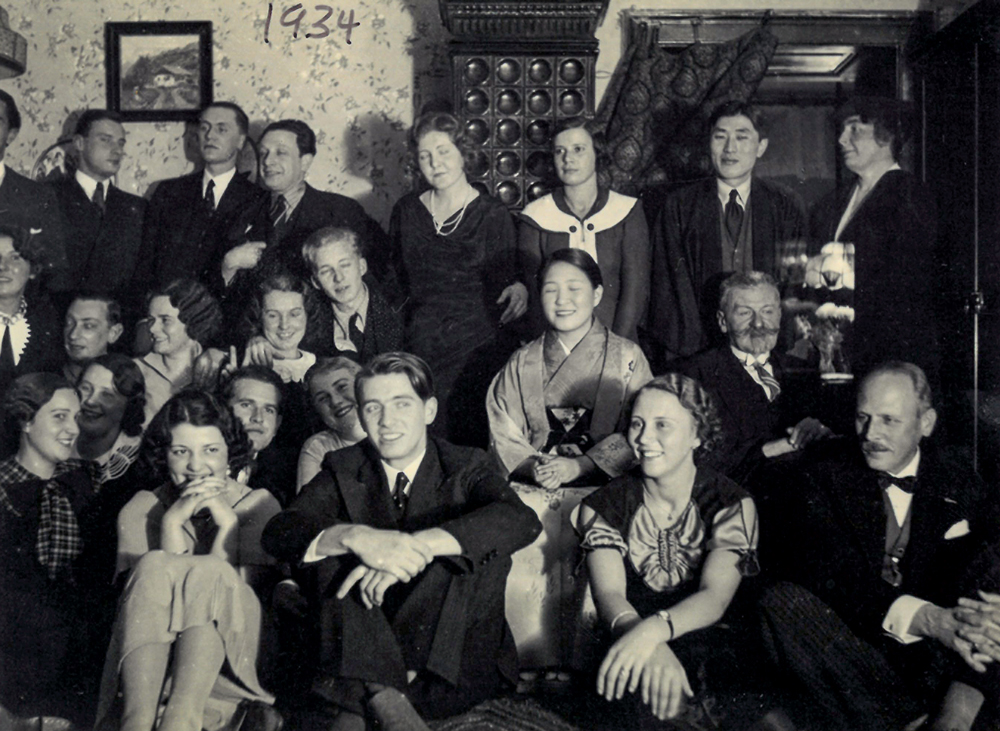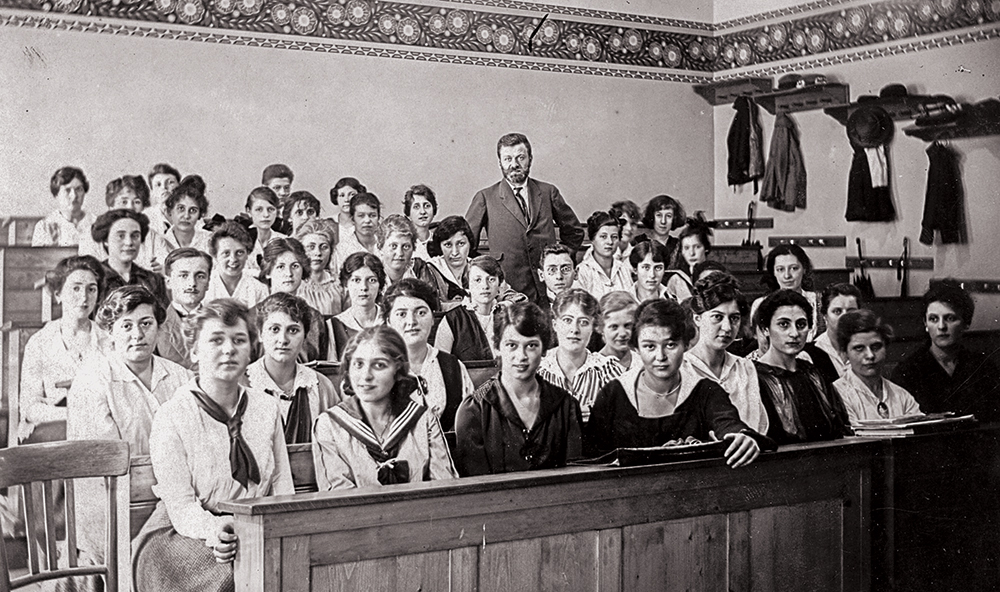With its concert and exhibition commemorating the 50th anniversary of Richard Stöhr’s death, the mdw is set to honour a former teacher who lost his job at age 63 on “racial” grounds in 1938 and was forced to emigrate to the USA in 1939. The composer’s daughter, Hedi Stöhr Ballantyne, plus three of his grandchildren will be present as guests of honour.

Richard Stöhr, who thought of himself primarily as a composer, was esteemed by his contemporaries and successors above all as a gifted teacher. Hundreds of pictures, postcards, and letters sent to him over the decades by former students, many of which bear dedications that verge on sounding downright worshipful, bear witness to this educator’s charismatic personality and to the passion for music that he kindled within his students.
Richard Stöhr, born in Vienna as Richard Stern on 11 June 1874, grew up in an art-loving, bourgeois Jewish family. While still a boy living at home with his parents, he made the acquaintance of Franz Liszt, Hans von Bülow, and even Richard Wagner. Following his Matura and graduation from school, he studied medicine in accordance with his father’s wishes—despite the fact that music was his sole passion. But immediately after becoming a doctor of medicine in 1898, he changed course in order to realise his dream of studying at the Conservatory. In 1900, he completed his studies in organ and was awarded the Silberne Gesellschaftsmedaille (the highest award that the Gesellschaft der Musikfreunde could present to a graduating student), and in 1902 and 1903, he passed the graduation exams for piano and composition with honours.
It was in the autumn of 1904 that Stöhr accepted his first teaching assignment at the Conservatory (today’s mdw), and over the next 34 years he became a key member of the teaching staff. His teaching ranged from subjects at the choir school to courses on harmony, counterpoint, chamber music with piano, music theory, and composition. Estimates based on extant records indicate that Stöhr must have taught in excess of 10,000 students over the course of his time here. His charisma, his charm, and above all his ability to spark people’s enthusiasm for music were legendary.
What’s more, he strove to support needy students and colleagues—such as by donating the proceeds from performances of his own works, especially during the lean years following World War One.

Stöhr was an exceptionally convivial person. His visitors’ book contained countless entries by such prominent and diverse personalities as Engelbert Humperdinck and Wilhelm Furtwängler as well as by teachers, employees, and above all students of the Academy in Vienna. His contacts with guests from abroad, including people from Scandinavia, the Netherlands, Switzerland, the USA, Canada, India, Japan, South Korea, and China, afforded his students a broad impression of the international musical world. These must have been highly stimulating and entertaining encounters: Stöhr would play the piano, and his company would discuss music as well as all manner of other things. And despite the rather conservative, late romantic style he employed in his own compositions, Stöhr still made sure to open the door to modernism for his young charges.
In his teaching work outside his home institution, by then known as the Academy, Stöhr likewise trod new paths. From the early 1930s, he spent several summers teaching at the extremely progressive American People’s College in Ötz, Tirol, where he made friendships that would later on facilitate his rescue following Austria’s annexation by Germany. In 1934, he mentioned plans to go abroad once he retired, probably not least because of the anti-Semitic tendencies that existed at the Academy, of which he’d first made specific note in 1927.
The day after German troops entered Austria, Stöhr—who had converted to Christianity in 1897—was summarily “put on leave” by the Academy due to his being a “full Jew”. It was against this backdrop that an American student wrote to the head of the renowned Curtis Institute in Philadelphia: “The situation is desperate in Austria, as you know, and getting worse every week. Dr. Stöhr says he would be willing to do anything over in this country – even to playing [sic] the piano in a night club.”

On 4 January 1939, Stöhr received the contract to teach at Curtis for which he had so longed—a contract that also secured him a visa for the USA. 23 February 1939 saw him board the S.S. Hamburg in Bremerhaven, and on 4 March, he landed in New York. Prior to that, he had succeeded in arranging his 16-year-old son’s emigration to Scandinavia, and the preparations for sending his twelve-year-old daughter to England under the “Kindertransport” children’s rescue programme were already well underway. His “Aryan” wife was not subject to persecution, but because Stöhr had left the country “without permission to emigrate”, the state ceased payment of her pension after a few months.
A few weeks after his arrival in the USA, Stöhr began teaching at the Curtis Institute. His students there included Leonard Bernstein—who admired Stöhr greatly, remained in contact with him for the rest of his life, and saw to his financial support during his final years of life. After his limited-term contract had run out, Curtis—at the time beset by financial difficulties—found itself unable to extend his employment. But Stöhr, by that time 67, still needed paid work since he had neither a source of regular income nor any entitlement to a pension. So he turned to several assistance organisations and also sent out over 60 inquiries and job applications—at first to no avail.
But that autumn, a former student managed to obtain a teaching position for him at St. Michael’s College in Vermont, at first in return for only room and board. Although Stöhr found the work there thoroughly unchallenging both as an artist and as an educator, this job provided him with a certain degree of security that, most importantly, enabled him to concentrate on his composing. And when his last teaching opportunities there dried up in 1950, the college still allowed him to remain in his apartment for a nominal fee. It was thus that a formerly proud and successful man was reduced to depending on the charity of others.
Even if Richard Stöhr’s knowledge, dedication, and abilities did enable him to find at least some professional opportunities in the USA, he found himself forced—after a life full of work—to spend over seven years of his old age in a strange place without his family and without any financial reserves or security. It was only in 1946 that he could finally take his daughter Hedi in his arms once more, followed by his wife Mizzi and son Richard upon their arrival in the USA one year later.

In 1956, when the Vienna Philharmonic came to Vermont to play a concert, the orchestra presented Stöhr with a programme bearing a German-language dedication that said: “For our dear teacher and master to remember his students by”, followed by the signatures of numerous former students—including a certain Helmut Wobisch, who had by 1933 already become a member of the (still illegal) National Socialist German Workers’ Party, thereafter joining the SS and continuing to work as a musician throughout the war. Following the war’s conclusion, the Denazification process had interrupted his career—but by the time he met Stöhr in the USA, he had already been reinstated as a member of the Academy’s teaching staff and was also firmly entrenched as solo trumpeter and general manager of the Philharmonic. By contrast, Richard Stöhr—17 years after his summary firing—had only just been awarded a pension by the Republic of Austria. One wonders whether he was aware of this irony. His daughter has indicated that whatever the case may have been, this sign of esteem did at least provide him with some cheer. Richard Stöhr ultimately decided against returning to Vienna and remained in the USA, where he died on 11 December 1967 at the age of 93.
The concert and subsequent exhibition opening will take place on 14 December 2017 in and in front of the mdw’s Joseph Haydn- Saal, beginning at 6:00 pm. Admission is free, but registration is required by 7 Dec. at arc-stoehr@mdw.ac.at or +43 1 711 55 6500.

